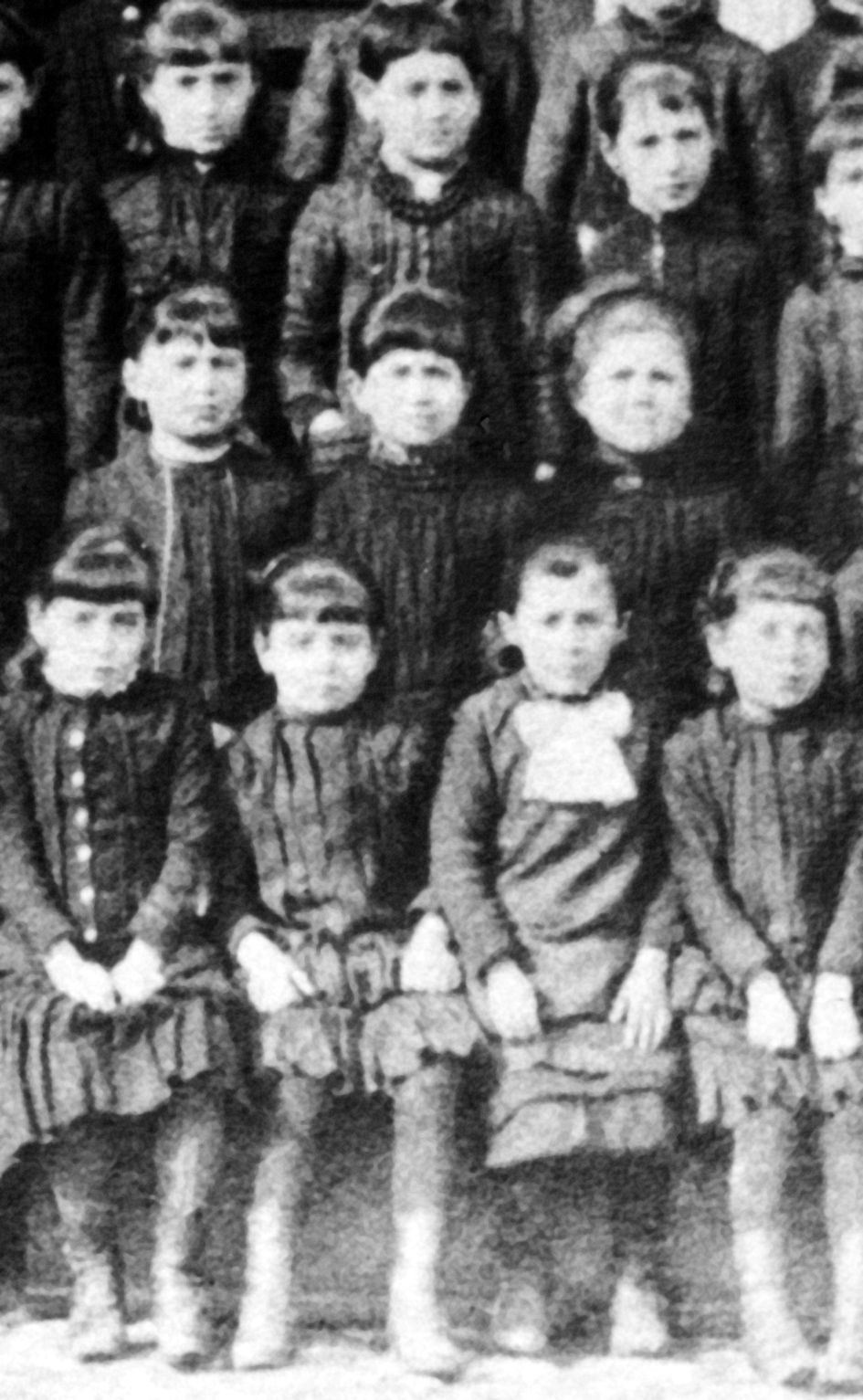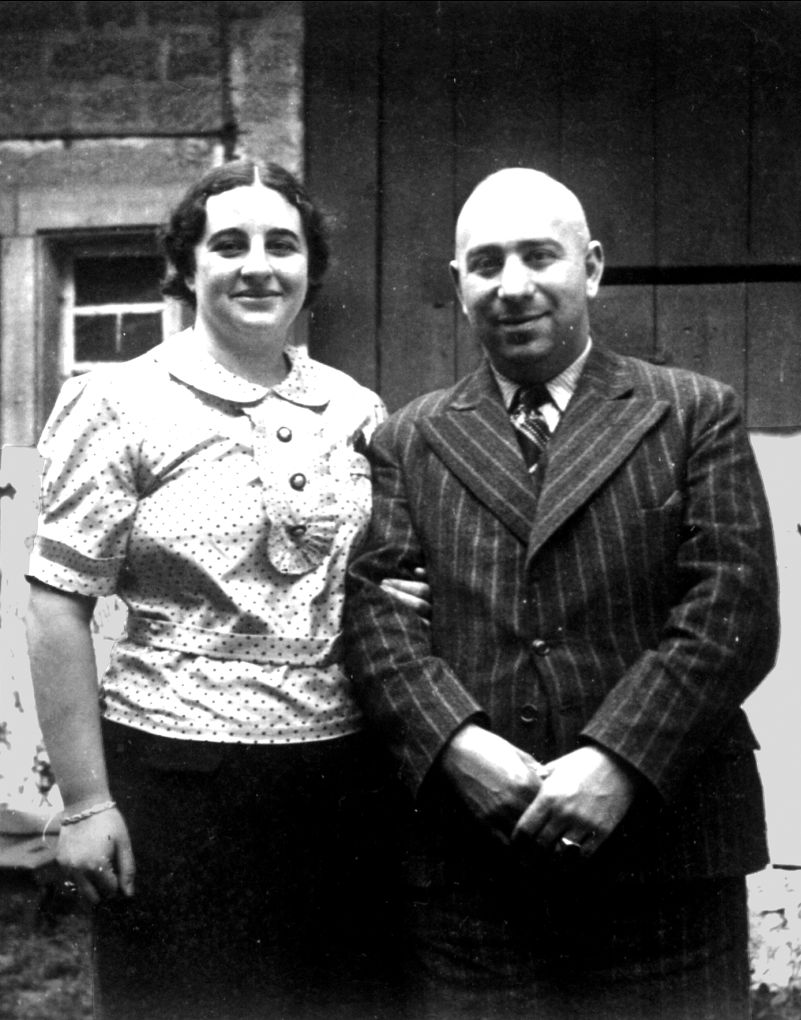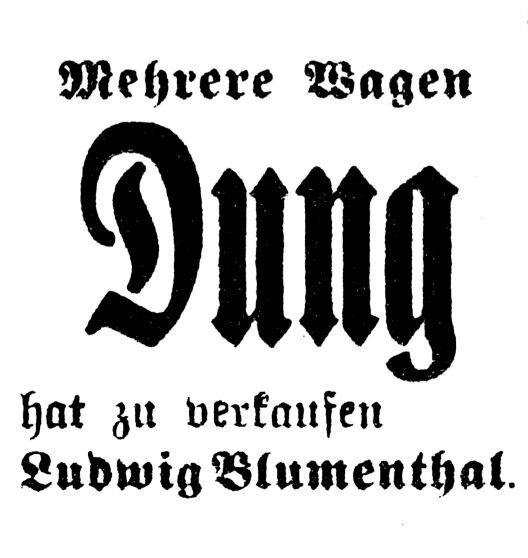 BLUMENTHAL,
Ludwig,
BLUMENTHAL,
Ludwig,
The Jewish
Community
of
La
Book Pages 133 - 135
67 Kapellenstrasse

KARL
NEIDLINGER
Ludwig Blumenthal, born July 30, 1881 in Laupheim, died in the USA,
OO Rosa Blumenthal, née Klein, born September 14, 1881 in Roth/Bayern, died August 14, 1936 in Laupheim.
– Gertrud, born March 24, 1912 in Laupheim, marriage to Karl Lauchheimer from Jebenhausen, Goeppingen, October 11, 1933, second marriage in the USA to Friedlaender, she died in 1991.
The family immigrated to New York, USA in July 1938.
The Blumenthal family was from Buttenhausen, Lautertal, just like the
previously introduced Bernheimer family. The grandfather Nathan Blumenthal
moved to Laupheim around 1870 and initially started trading cattle and
horses. His ten legitimate children were born between 1868 and 1884. Since
the oldest sons all moved to the USA, the second youngest son Ludwig took
over his father’s business in 1909. In the center of the 1884 primary school
photograph with teacher Ascher depicted below, the two Blumenthal daughters
Mathilde (*1876, on the left) and Jenny (*1877, on the right) can be seen.
At that time, Ludwig was not yet attending school.

(Photo: Leo-Baeck-Institut,
NY)
John H. Bergmann, the chronicler and genealogist of the Jewish community Laupheim, considered it worth mentioning in the genealogical table of the Blumenthal family that Nathan Blumenthal had „many [illegitimate] children in the villages around Laupheim” in addition to his ten legitimate children. Nevertheless, John Bergmann did not go into further detail.
The successful 2004 exhibition Biberach im Nazionalsozialismus addressed the fate of Klothilde
Nusser from Biberach and her seven illegitimate children, among other
things. These children, who were born between 1889 and 1903, later fell
victim to the Nazi regime, as the civil registry of Biberach noted that it
was “known all over town that the Jew Nathan Blumenthal from Laupheim
frequently visited Klothilde Nusser
and also took care of her illegitimate children.” Apparently, Nathan
Blumenthal sustained a second family in Biberach.
 |
 |
|
Gertrud Blumenthal around 1932. |
Gertrud and Karl Lauchheimer in 1938, immediately before the
emigration. |
A contemporary witness recalls that Nathan’s son Ludwig maintained successful trade relations especially in the Illertal/Holzstoecke region and with the farmers from Schnuerpflingen in particular. In 1909, he married Rosa Klein from Roth, Nuremberg. The couple had two children: their son Fritz was born in 1910, but died soon after birth, and their daughter Gertrud was born in 1912.

Ludwig Blumenthal was actively involved in the First World War from the fifth day of mobilization on August 5, 1914 until the defeat in November 1918. Due to his experience with cattle, he was assigned most of the time as a butcher to provide the troops with meat. Although there were not that many chances to earn military decorations, he returned with the Iron Cross and other awards, according to the memories of his daughter. The whole family was very proud of these honors.
One of the few documents regarding the family is a small advert from the
Laupheimer Verkuendiger issued
July 6, 1930, in which several cartloads of dung are offered for sale.
Apparently Ludwig Blumenthal had no use for the manure accumulating in his
stable. This indicates that the family did not own any land of their own
unlike other, long established cattle trading families who were often
landowners and operated a farm as a supplementary source of income.
In 1993 Gertrud Blumenthal married tradesman Karl Lauchheimer from
Jebenhausen near Goeppingen, and moved with him to his hometown. They
remained childless. Karl Lauchheimer required an annual travel permit so he
could practice his profession. He was first denied this document in 1938,
and thus the couple agreed to emigrate. Gertrud’s father Ludwig, a widower
since 1936, decided to join them as cattle traders, too, were faced with
growing restrictions on job opportunities. Their relatives in the USA filed
affidavits allowing them to emigrate just in time in July, 1938. In order to
be able to take their furniture, the family had to pay a Jewish property tax
of 10,000 Mark. Ludwig Blumenthal appears to have sold the estate at 68
Kapellenstrasse at a still more or less fair price as no postwar restitution
claims or other papers regarding the house exist.
In 1988, for a study group of the Carl Laemmle Gymnasium, Trude Friedlaender
wrote down her memoirs of her beginnings in the USA and her first visit to
her old hometown after the war:
“The first few years were very difficult for us as we did not speak the language. It was easy for women to find work, but not for men. We returned home for the first time in 1967. When I saw Laupheim, I said to my husband: ‘It still feels like home.’ It broke my heart to leave Laupheim. I now know that the young generation cannot be held responsible for the sins of the old. We have been living in the USA for over 50 years now, and you cannot shift an old tree without it dying.”
Trude Friedlaender and her second husband were also present in 1988 at the
city’s first official invitation extended to its former Jewish citizens. She
visited the family of the maid who worked for the Blumenthals, since
relationships with the Christian domestic workers were, as in most other
Jewish households, close and based on mutual trust. The salary is also said
to have often been above average. During her visit in 1988, Trude
Friedlaender was already in poor health. She died three years later.
Sources:
Exhibition catalogue “Nationalsozialismus in Biberach”, Ed.
Frank Brunecker, Biberach Museum, 2006, p. 85 ff.
John-Bergmann-Nachlass, city archive Laupheim.
Photos and memories of Trude Friedlaender, Archive of Dr. Bayer.